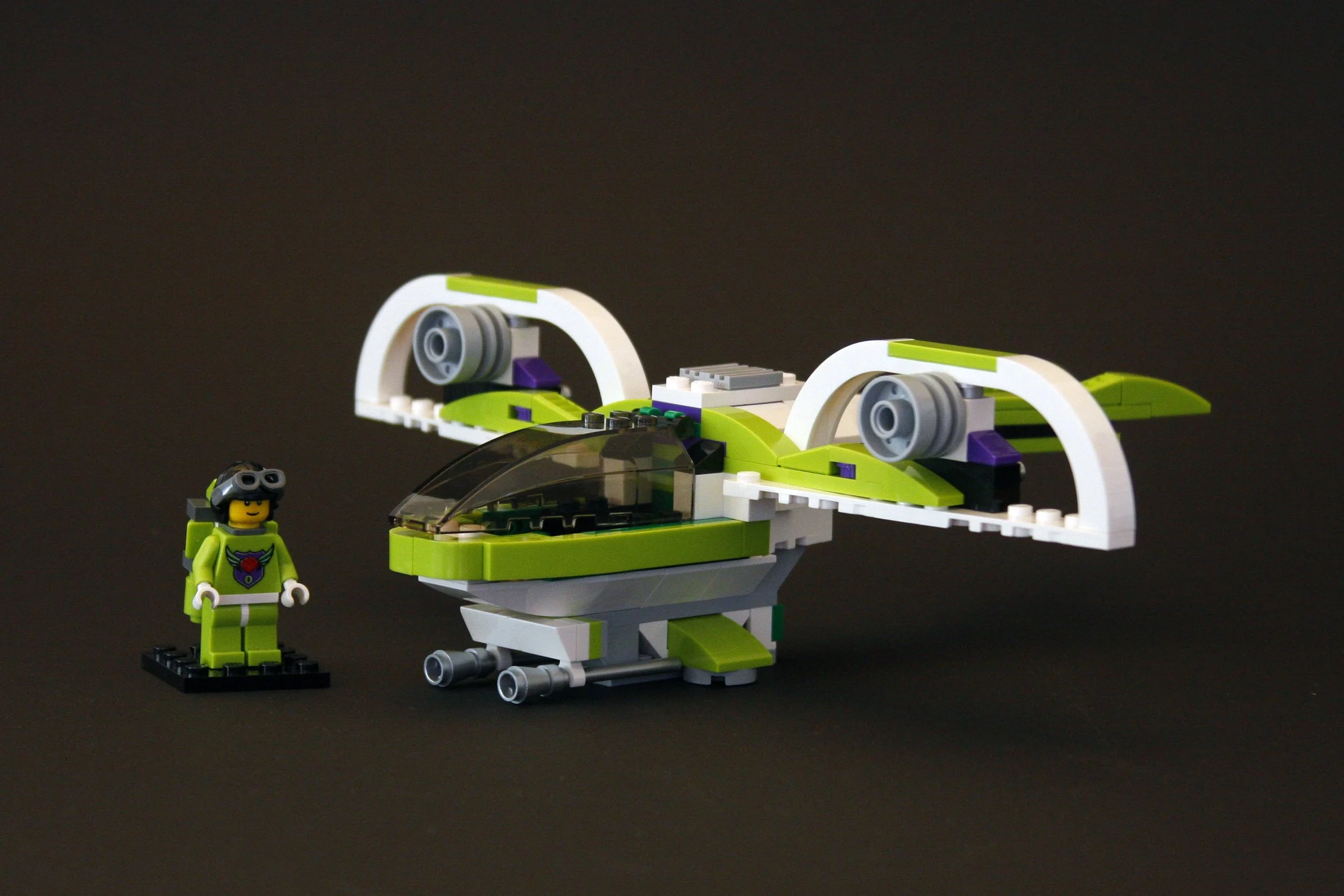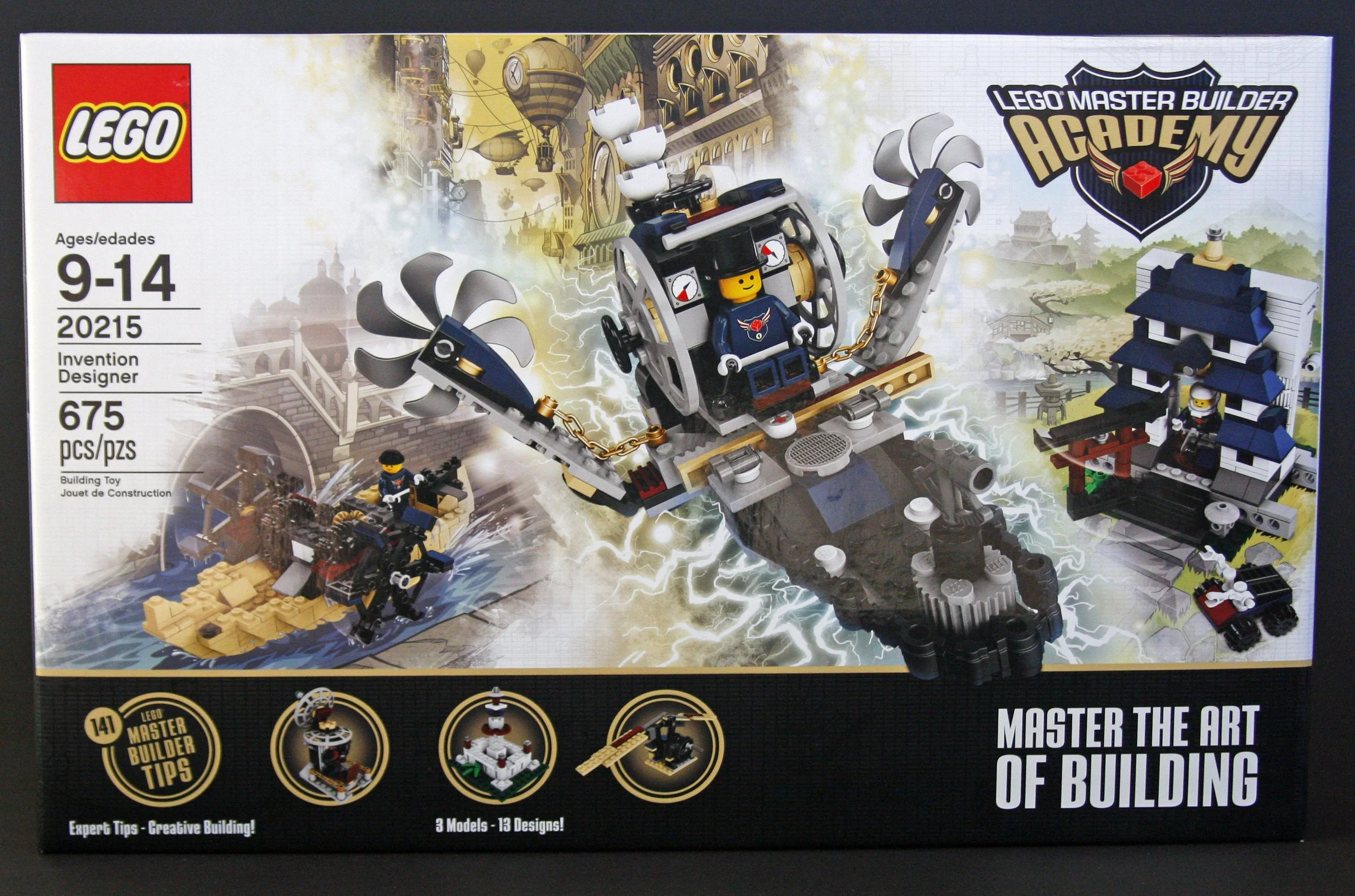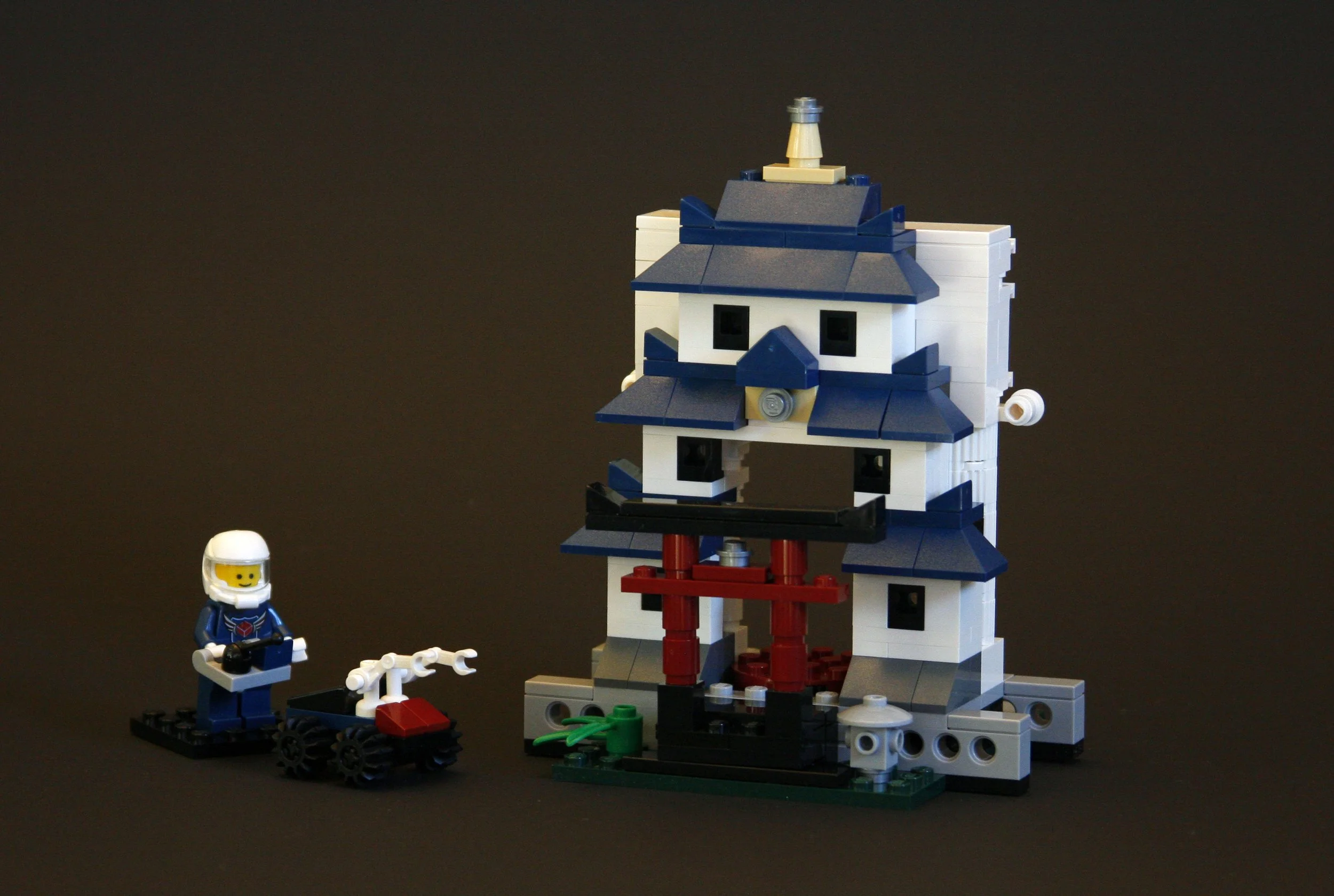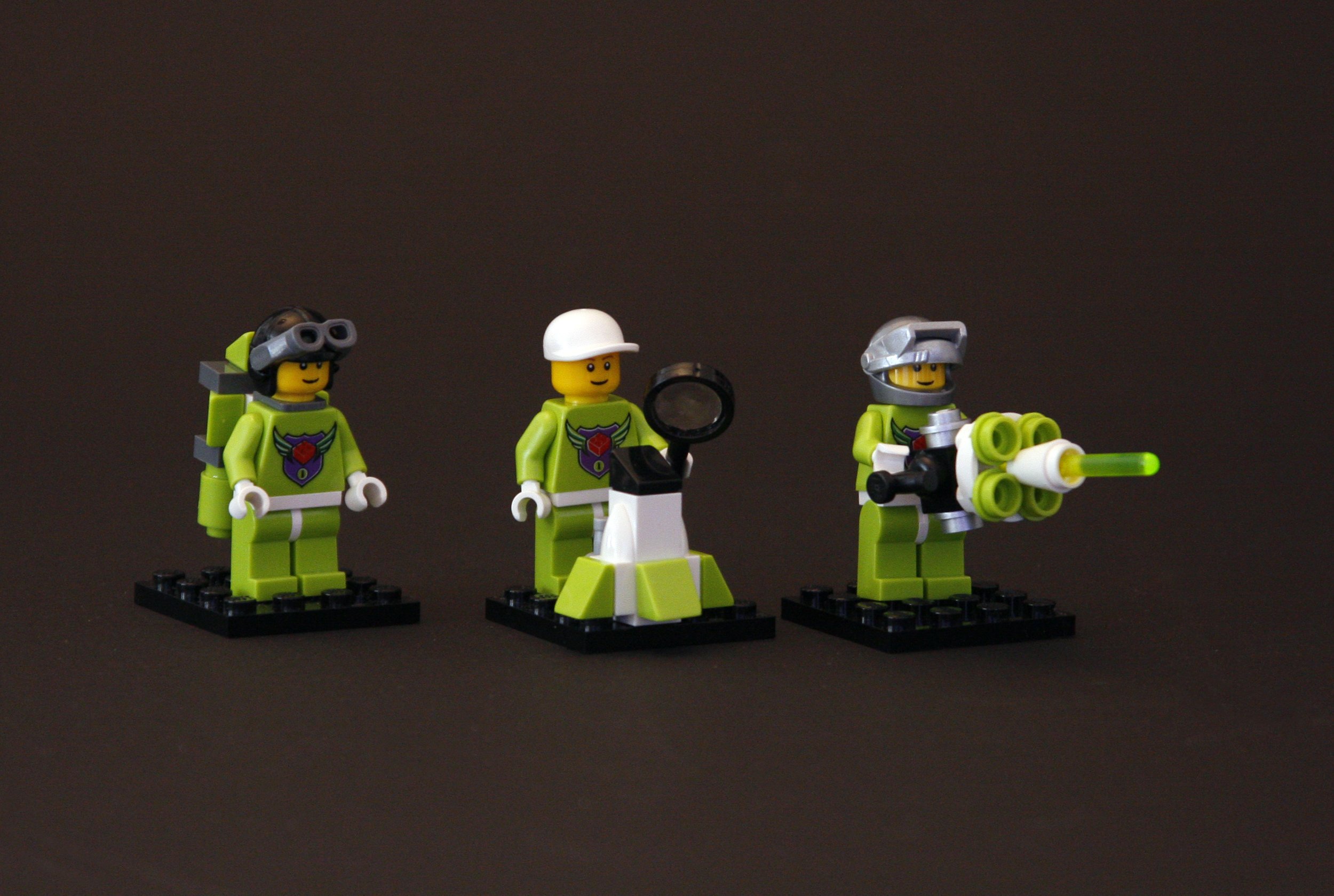Earn Your LEGO MBA: The Master Builder Academy
/Nearly everyone wants to improve their skills building and designing LEGO models (especially BrickNerd readers)! What better way to learn than a structured tutorial building experience, focusing on fundamental skills with increasing complexity? Enter the LEGO MBA.
The LEGO Master Builder Academy (MBA) sets were released from 2011 – 2013. Initially, they were offered as a subscription service. You would receive a box with the first kit of each level. The box included a plastic sorting tray and the designer handbook. The second and third kits would each arrive in a polybag along with the designer handbook. The was enough room in the box to add the second and third handbooks in that level, but not really room for the additional LEGO pieces.
Sadly, the MBA series was only offered in the USA. This limited release was the main reason I wanted to document the techniques covered in the series.
Each set included an elaborate 84-page Designer Handbook. These were very high-quality with a binding much like the LEGO Architecture series instruction books. There were several pages of introduction materials talking about the techniques and styles of that kit. The building instructions were annotated with the techniques and other tips, providing an “as-you-build” tutorial.
Each kit included instructions for three models (or more), much like the Creator 3-in-1 series. Each level also had a unique color scheme. This was helpful if you wanted to build larger models using parts from multiple kits. At the end of the handbook were several additional pages summarizing the lessons, and often providing photos of AFOL MOCs related to the set’s subject.
So let’s start earning our LEGO MBA!
Level 1
The MBA’s Level One sets were meant to teach basic building principles like interlocking bricks, SNOT, and basic NPU. They were themed with primarily lime and white colors and came with a minifigure themed with the build. Here’s a summary of the different kits in Level One.
Kit 1, Space Designer, Set 20200, 178 pieces:
Technique 1: Locking - Placing one LEGO piece across two others for strength. I might have said interlocking, but certainly one of the most basic and important techniques,
Technique 2: Sideways Building - Utilizing Studs Not On Top (SNOT) elements to allow building in multiple directions.
Kit 2, Microbuild Designer, Set #20201, 222 pieces:
Technique 3: Size-Scaling - Taking something big and figuring out how to build it small.
Technique 4: Building with Small Elements - Making the best possible use of the smallest LEGO elements.
Kit 3, Robot Designer, Set #20202, 155 pieces:
Technique 5: Balance - Making sure that different sides of your model have similar sizes and weights.
Technique 6: Details - Using specially chosen LEGO elements to help tell your creation’s story.
Technique 7: Alternative Uses - Finding creative ways to use elements in other than the “normal” usage.
Level 2
The MBA’s Level Two sets were meant to take building techniques to the next level and addressed things like stability, color blocking and styling. It also introduced LEGO Technic elements into the mix. The kits were themed with yellow and grey colors. Starting with Level Two, all the kits were available in a single retail box. Here’s a summary of the different kits in Level Two.
Kit 4, Flight Designer, Set #20203, 150 pieces:
Technique 8: Shape - Analyzing an objects shape to replicate it using similar LEGO element shapes (rectangles, slopes, wedges, etc.).
Technique 9: Stability - Taking the locking technique further with interlocking in multiple directions and using strong core elements.
Kit 5, Creature Designer, Set #20204, 232 pieces:
Technique 10: Color - Selecting LEGO colors to help create the mood, story and emotion of your creations.
Technique 11: Styling - Choosing appropriate LEGO elements shape and texture (smooth or curved for aerodynamic shapes, rough or spiked for a fierce creature).
Kit 6, Auto Designer, Set #20205, 188 pieces:
Technique 12: LEGO Technic Elements - Using Technic elements to create models with moving mechanical functions.
Technique 13: Support Elements - Using hidden LEGO elements to create shape and stability for the exterior model design.
Level 3
The next few levels started to get a little more complicated. The MBA’s Level Three and Four sets seemed to focus on more conceptual techniques than Levels One and Two. This follows a natural progression of building skills. While Level One and Two’s Designer Handbooks had instructions for three models, Levels Three and Four had only one primary model and several other “springboard” models. These springboard models were intended to spark further creativity from the builder.
The MBA’s Level Three sets focused more on storytelling, play functions, recreating natural shapes and realism. They were themed with darker colors like orange, brown, grey and black. yellow and grey colors. (They also included a little frog traveling companion which made an appearance in our frog article.) Here’s a summary of the different kits in Level Three.
Kit 7, The Lost Village, Set #20206, 229 pieces:
Technique: Story Building - Using LEGO bricks to create an adventure with a setting and things to do within the model.
Technique: Modular Building - Creating a standardized connection to allow multiple models to be easily joined.
Kit 8, The Forbidden Bridge, Set #20207, 220 pieces:
Technique: Nature Details - Using different colors and shapes to create a realistic natural environment.
Technique: Hidden Features - Creating unexpected play functions within the models.
Kit 9, The Dark Lair, Set #20208, 183 pieces:
Technique: Large Elements - Adding lightweight stability, and/or unique shapes and details to models.
Technique: Villain Details - Combining color, styling and story building to tell the story about the villain the hero will be facing.
(Rebuilding the sets for this article, I was given a sad reminder that the reddish-brown pieces in Level Three were from the era of brittle parts. Multiple parts broke as I reassembled them, and I also heard several faint “pops” from the built models as other parts broke after surviving the initial assembly. Yes, LEGO will replace the parts, but it’s a bit of a hassle.)
I believe that the subscription service ended at Level Three, and that Level Four was only available in a single retail set.
Level 4
Some of the later MBA level kits were combined into one larger box like this final Level Four set. Level Four functioned as a sort of capstone class to top off the series. It focused on architectural details, historical design and mechanics. These kits were themed with dark blue colors. Here’s a summary of the different kits in Level Four.
Kits 10 - 12, Invention Designer, Set #20215, 675 Pieces:
MBA Level 4 Retail Box
Kit 10, Time Machine:
Technique: Machinery - Create the look of technology and moving parts.
Technique: Materials - Designing models that look like they are wood, metal and more.
Kit 11, World Architecture:
Technique: Historical Design - Building models to fit a place and time.
Technique: Architectural Details - Design buildings with eye-catching details.
Kit 12, Inventor’s Lab:
Technique: Inventions - Transform your imagination into a new idea.
Technique: Functions - Bring inventions to life with LEGO bricks.
Mastering the Minifig
Now that you’ve seen all the kits, let’s take a closer look at the minifgures. One of the fun aspects of the MBA was the elaborate minifigure provided with each kit. The accessory tied in with the specific theme and model.
Unfortunately, only one minifigure was provided with each level as part of the subscription service even though there were multiple kits. You were meant to use the same minifigure over and over. (I know there were many complaints about this from customers.) LEGO addressed this late when the retail boxed version of each level were released and they included three minifigures per level, one for each smaller kit.
Additionally, each kit included a unique code you could use to access additional online content. There were challenges where you could earn digital badges and galleries where you could upload pictures. Sadly like most of LEGO’s ventures into digital content, this has since been deactivated.
A Subscription for Success
After building all 36 Master Builder Academy models you may not have become an instant Master Model Builder, but you were certainly given a range of skills to build upon in your LEGO building hobby! Looking back, did the MBA experience improve my building as an AFOL? Yes, but probably not a huge amount. As a long-time builder, I was clearly not the target audience of the program.
Certainly, less experienced builders would have benefitted immensely. I can imagine a child just beginning their LEGO journey might really learn a thing or two from the tutorials. The tips and commentaries in the instructions would have sparked many “Oh, that’s why they designed it that way” moments. But I certainly still enjoyed the experience, and it never hurts to be reminded of good building practices, just like you can find in many of our articles here on BrickNerd.
Did the subscription model work? I’d argue that it was used more as a gimmick but it did emphasize the importance of sequential learning. LEGO shifted to combo level packs to decrease complexity and increase “buy-ability” of the Master Builder Academy, I assume. However with recent reports stemming from a consumer survey about LEGO transforming the VIP program into a possible new subscription service, we will have to wait and see what lessons LEGO learned from their own MBA.
Did you build your way through the Master Builder Academy? Leave your thoughts in the comments below.
Do you want to help BrickNerd continue publishing articles like this one? Become a top patron like Charlie Stephens, Marc & Liz Puleo, Paige Mueller, Rob Klingberg from Brickstuff, John & Joshua Hanlon from Beyond the Brick, Megan Lum, and Andy Price to show your support, get early access, exclusive swag and more.


































